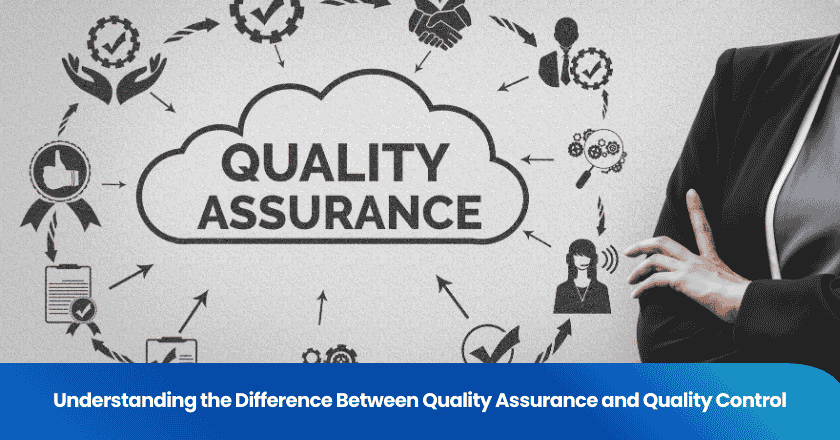
You encounter quality and quality control every day, whether you build software or manufacture products. Quality assurance and quality control serve distinct roles. Quality assurance focuses on the processes that prevent defects, while quality control identifies defects in the final product. This distinction matters because organizations that understand it deliver higher quality outcomes. Picture a chef preparing a meal: quality assurance is the recipe and cooking method, quality control is tasting the dish before serving. Consider how these concepts shape your projects or studies.
Key Takeaways
- Quality assurance focuses on preventing defects through process management. It sets the foundation for high-quality outcomes.
- Quality control identifies defects in the final product. It ensures that what you deliver meets established quality standards.
- Integrating both QA and QC throughout your project enhances efficiency. This combination helps you save time and reduce costly rework.
- Start quality assurance early in your project. Set clear objectives and conduct regular audits to maintain high standards.
- Use checklists and training to ensure your team understands quality expectations. This promotes consistency and accountability.
Quality Assurance and Quality Control Basics
Quality Assurance Defined
You play a crucial role in shaping the outcome of any project by focusing on quality assurance. The quality assurance definition centers on a proactive, process-oriented approach. You design and implement systematic activities that prevent defects before they occur. This means you plan, document, and improve processes to ensure every product or service meets established standards. According to international guidelines, quality assurance involves a set of planned and systematic activities that help you fulfill quality requirements. You often use a quality management system to create a structured framework, making it easier to deliver consistent results.
Tip: Think of quality assurance as building a strong foundation. You set clear objectives, define protocols, and conduct regular audits. This approach gives your customers confidence in your ability to deliver high-quality outcomes.
A key principle is "right the first time." You aim to reduce errors and avoid costly rework. By focusing on prevention, you help your team save time and resources while maintaining high standards.
| Principle | Description |
|---|---|
| Quality Assurance (QA) | A set of planned and systematic activities to ensure quality requirements are fulfilled. |
| ISO Standards | International guidelines providing best practices and requirements for quality, safety, and efficiency. |
| Quality Management System | A structured framework that helps organizations deliver high-quality products consistently. |
Quality Control Defined
Quality control definition focuses on the inspection and verification of products or services. You use operational techniques to measure, test, and review outputs, ensuring they meet specific quality standards. While quality assurance and quality control both aim for excellence, quality control is product-oriented and reactive. You identify and correct defects before the product reaches the customer.
In your daily work, you might perform tasks such as inspecting materials, conducting tests, or reviewing finished products. These activities help you detect issues and take corrective action quickly. Quality and quality control go hand in hand, as you monitor and inspect at different stages to maintain accountability and improve outcomes.
| Aspect | Quality Assurance (QA) | Quality Control (QC) |
|---|---|---|
| Focus | Prevention of defects | Detection of defects |
| Approach | Process-oriented | Product-oriented |
| Timing | Proactive approach | Reactive approach |
| Goal | Continuous improvement | Defect elimination |
| Methods | Process mapping, training, SOPs | Inspections, testing, sampling |
| Documentation | Procedural documentation | Outcome-based documentation |
Understanding quality assurance vs quality control helps you choose the right strategy for each phase of your project.
Key Differences
Process vs. Product
You need to understand how process-oriented and product-oriented approaches shape quality and quality control. When you focus on processes, you build a strong foundation for every project. You standardize methods and improve workflows to prevent mistakes before they happen. This approach forms the core of the quality assurance definition. You design and monitor each step, ensuring consistency and reliability.
On the other hand, a product-oriented approach centers on the final outcome. You inspect, test, and review the finished product to catch any defects. This method aligns with the quality control definition. You verify that the product meets established standards before it reaches the customer.
- Process-oriented (QA): You improve and standardize processes throughout the project life cycle to prevent defects.
- Product-oriented (QC): You test the actual product to identify defects and ensure it meets quality requirements.
- Proactive vs. Reactive: You use QA to prevent issues, while QC helps you find and fix problems after development.
Imagine building a house. Quality assurance is like creating detailed blueprints and following construction codes. Quality control is the final inspection before you hand over the keys, checking for cracks or faulty wiring.
Prevention vs. Detection
You play a vital role in determining whether your team prevents problems or detects them after they occur. Quality assurance and quality control differ in their approach. You use QA to prevent defects by managing processes and setting clear standards. You use QC to detect and correct defects through inspections and tests.
The integration of both strategies is essential for maintaining high standards. QA emphasizes process management, ensuring that every method and system supports high-quality results. QC focuses on verifying the output, making sure it meets expectations.
- Quality assurance is proactive. You prevent defects by defining and following processes.
- Quality control is reactive. You detect and correct defects through inspection and testing.
- Prevention strategies, such as thorough process design and mistake-proofing, are more cost-effective than fixing defects later.
- The zero defects concept encourages you to prevent issues rather than rely on inspection.
- Philip Crosby’s work shows that investing in prevention saves more money than correcting mistakes after production.
| Aspect | Quality Assurance (QA) | Quality Control (QC) |
|---|---|---|
| Timing | Before and during production | During and after production |
| Focus | Preventing defects throughout the production | Identifying defects in finished products |
| Approach | Proactive, designing processes to prevent defects | Reactive, verifying if products meet standards |
| Involvement | Involves entire team across all departments | Typically involves dedicated testing personnel |
Tip: You save time and resources when you prevent defects early. Regular process reviews and audits help you avoid costly rework.
Project Timing
You must consider when to apply quality assurance and quality control in your project timeline. QA activities begin early, during planning and design. You set objectives, create a quality management system, and define standards. You conduct audits and peer reviews to ensure every process aligns with your goals.
QC activities take place during and after production. You inspect outputs, test products, and verify compliance with requirements. You use these checks to catch issues before delivery.
| Stage | Activity Description |
|---|---|
| Quality Planning | You plan quality assurance activities as a key step in project quality management. |
| Quality Audits | You conduct quality audits, including peer reviews and technical reviews. |
| Quality Control Procedures | You incorporate quality assurance methods and quality control procedures in the project plan. |
1. Quality Planning: You develop a quality management plan with actions, timelines, and resources.
2. Quality Assurance: You implement strategies to meet objectives and standards.
3. Quality Control: You conduct inspections and audits to ensure compliance.
Projects with effective monitoring and controlling processes are 2.5 times more likely to finish on time and within budget. Success rates increase by 65% when you implement regular quality checks and performance monitoring. You maintain consistency and reduce costly rework by integrating both QA and QC throughout the project.
Note: A realistic project schedule gives you the time and structure to follow quality assurance protocols, conduct inspections, and address issues proactively.
You see that quality and quality control work together at every stage. By understanding when and how to apply each, you deliver better results and improve customer satisfaction.
Quality and Quality Control in Practice
Design Phase
You set the foundation for project success during the design phase. Quality assurance activities help you prevent errors before they occur. You establish design standards and create a quality management system to guide your team. You implement consistent documentation protocols and coordinate with consultants to maintain clear communication. Early code analysis, occupancy classification, and accessibility compliance checks ensure your design meets legal and user requirements. Constructability reviews assess feasibility, while regular verification against program requirements keeps your project aligned with goals.
| Quality Assurance Activity | Description |
|---|---|
| Establishing design standards and BIM management plans | Setting guidelines before project work begins |
| Implementing consistent documentation protocols | Ensuring uniformity in project documentation |
| Coordinating regularly with consultants | Maintaining communication with external experts |
| Conducting early code analysis and occupancy classification analysis and accessibility compliance checks | Ensuring design meets legal and accessibility standards |
| Performing constructability reviews | Assessing the feasibility of the design |
| Regularly verifying design against the program requirements | Ensuring the design aligns with project goals |
Quality control measures in the design phase focus on verifying that specifications are met. You monitor project components, set clear quality goals, and use checklists to facilitate inspections. You train your team on quality expectations and conduct regular checks to ensure compliance with standards.
- Monitor project components to identify issues early.
- Set clear quality goals for design outcomes.
- Use checklists to guide inspections.
- Train team members on quality expectations.
- Conduct regular compliance checks.
Implementation Phase
You transition from planning to execution during the implementation phase. Quality assurance specialists maintain the quality system, driving continuous improvement. Quality managers validate progress through comprehensive testing. Project managers provide strategic oversight and align quality vision with business objectives. The project team contributes to quality outcomes under the established framework.
| Stakeholder Role | Responsibilities |
|---|---|
| Quality Assurance Specialist | Maintain the quality system for continuous change and upgrade. |
| Quality Manager | Ensure comprehensive quality testing to validate progress. |
| Project Manager | Provide strategic oversight and set the quality vision aligned with business objectives. |
| Quality Assurance Project Manager | Drive quality outcomes and ensure comprehensive quality coverage throughout project execution. |
| Project Team | Contribute to quality outcomes under the framework established by the project manager. |
Quality control activities shift to hands-on testing and validation. You oversee coding and development, ensuring code matches design specifications. Unit testing identifies issues in individual modules. Integration testing checks how modules work together. System testing evaluates the entire software in a controlled environment. Deployment prepares the software for users, while user training enables effective adoption.
| Activity | Description | Objective |
|---|---|---|
| Coding and Development | Developers convert design specifications into functional code. | Produce clean, functional, and efficient code that adheres to the design blueprint. |
| Unit Testing | Validates the functionality of individual components through isolated tests. | Identify and correct issues in individual modules to improve reliability in subsequent phases. |
| Integration Testing | Checks how different modules work together after unit testing. | Confirm that all parts of the system communicate effectively, catching integration issues early. |
| System Testing | Evaluates the entire software in a controlled environment. | Verify that the software meets the outlined requirements and performs optimally. |
| Deployment | Prepares the software for its end users. | Ensure a smooth transition from development to production. |
| User Training | Organizes training sessions for end users. | Enable users to leverage the software effectively, enhancing adoption. |
Tip: You improve project outcomes by integrating both QA and QC activities throughout each phase. Collaboration between stakeholders and clear communication help you overcome common challenges such as last-minute changes, limited test automation experience, and managing cross-team dependencies.
Case Study
Real-World Application
You can see the value of integrating quality assurance and quality control by looking at real projects. When you use both approaches, you create a strong quality management system that supports every phase of your work. Consider these quality assurance vs quality control examples from different industries:
- Google adopted a QA-first mindset for mobile testing. You would notice a 40% reduction in release cycles and a better user experience. This shows how combining QA and QC can speed up delivery and improve results.
- Knight Capital suffered a $440 million loss due to a deployment error. If you skip thorough QC checks, you risk major setbacks. This example highlights the importance of not overlooking quality control.
You can also learn from how companies apply quality strategies to achieve success:
| Company | Quality Improvement Strategy | Impact on Project Success |
|---|---|---|
| McDonald’s | Lean principles with the 'Made for You' system | Reduced food waste and improved order accuracy |
| Walmart | Six Sigma for supply chain management | Greater visibility, reduced overstocking and costs |
| Delta Air Lines | Agile principles for customer experience modernization | Rapid updates based on real-time feedback |
| Mayo Clinic | Six Sigma to improve patient care processes | Major reductions in wait times and cancellations |
| Hochschild Mining | Crowdsourcing for operational improvements | Developed a $40M drilling optimization strategy |
You can measure the benefits of integrating QA and QC through clear metrics:
| Metric/Practice | Benefit Description |
|---|---|
| Supply Chain Data Quality | Prevents costly disruptions and optimizes operations |
| Quality Assurance Procedures | Monitors inventory and validates supplier information |
| Regular Audits | Verifies compliance and finds areas for improvement |
| Error Rate Reduction | Shows success in prevention efforts |
| Improved Error Detection | Reflects effective control measures |
When you combine QA and QC, you build a system that prevents errors and catches issues early. You protect your project from costly mistakes and deliver better outcomes for your team and customers.
You see clear differences between quality assurance and quality control. The table below highlights these distinctions:
| Aspect | Quality Assurance (QA) | Quality Control (QC) |
|---|---|---|
| Definition | Activities before production | Practices for output |
| Goal | Prevent defects, ensure satisfaction | Verify deliverables, detect mistakes |
| Approach | Proactive | Reactive |
| Focus | Process | Final product |
| Example | Organizing flawless development | Final checkpoint before delivery |
You improve project outcomes by aligning QA and QC. You prevent defects, reduce costs, and enhance customer satisfaction. Apply these steps to integrate both practices:
1. Define clear quality standards.
2. Create efficient QA checklists.
3. Train your team for consistency.
4. Automate repetitive tasks.
You build reliable products and strengthen your reputation by consistently applying these concepts.
FAQ
What is the main goal of quality assurance?
You aim to prevent defects by improving and standardizing processes. Quality assurance helps you create reliable products or services by focusing on planning, documentation, and continuous improvement.
How does quality control differ from quality assurance?
You use quality control to detect and correct defects in finished products. Quality assurance focuses on process improvement, while quality control checks the final output for errors.
Can you use both quality assurance and quality control in one project?
Yes, you should use both. Quality assurance helps you set up strong processes. Quality control ensures your final product meets standards. Together, they improve project outcomes.
Who is responsible for quality assurance and quality control?
You share responsibility with your team. Quality assurance often involves managers and process designers. Quality control usually involves inspectors, testers, or those reviewing the final product.
Why is it important to distinguish between QA and QC?
You make better decisions when you understand the difference. This knowledge helps you prevent problems early and catch issues before delivery, leading to higher quality and customer satisfaction.
Grow your business with TradeAider Service
Click the button below to directly enter the TradeAider Service System. The simple steps from booking and payment to receiving reports are easy to operate.



